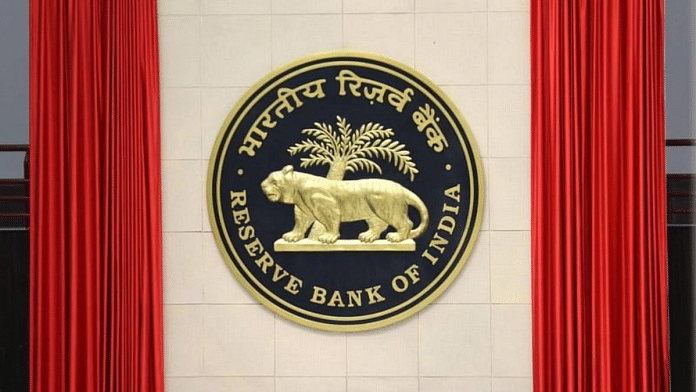New Delhi: The Indian financial sector, including both banks and non-banking financial companies (NBFCs), is steadily seeing its health improve, with several key indicators improving, the Reserve Bank of India (RBI) has said in its latest report.
The central bank Wednesday released the June 2023 edition of its half-yearly Financial Stability Report, which provides a detailed overview of the state of the economy and the financial sector.
“The health of the Indian banking system is robust, fortified by a multi-year low non-performing loans and adequate level of capital and liquidity buffers,” the report said.
According to the latest data, made available in the report, the gross non-performing assets (GNPA) ratio and net non-performing assets (NNPA) — both measures of the quality of loans given out by the banking system — have fallen from 11.5 percent and 6.1 percent in March 2018, their highest levels, to 3.9 percent and 1 percent in March 2023, respectively.
In addition, the banks’ provisioning coverage ratio (PCR), which is a measure of a bank’s ability to cover losses arising out of NPAs, rose to 74 percent in March 2023, from its low of 40.1 percent in June 2016.
The data showed that the highest levels of NPAs were in agriculture (7.7 percent), followed by industry (5.2 percent), services (3.9 percent), and personal loans (1.4 percent).
Within personal loans, the highest levels of NPAs were in educational loans, followed by credit cards, vehicle loans, and housing loans.
“Healthier balance sheets are catalysing sustained and broad-based pick-up in the momentum of credit growth, with credit flow improving to all sectors of the economy,” the report said.
However, despite this improvement in the state of bank balance sheets, the RBI highlighted that credit delivery in India was still muted in comparison to advanced and emerging market peers. In other words, while banks are in a better position to lend, not enough borrowers are coming forward.
The RBI noted that the NBFC sector has seen a “marked improvement” in its financial health since the release of the last Financial Stability Report in December 2022. This improvement has been across a variety of parameters, including asset quality, capital levels, and liquidity.
“Capital levels rose, with the CRAR (capital to risk assets ratio) increasing from 26.0 percent to 27.5 per cent between September 2022 and March 2023,” the report said. It added, “The GNPA ratio… fell sharply from 5.4 percent in September 2022 to 3.8 percent in March 2023.”
The percentage of special mention accounts (SMAs) — accounts that are at higher risk of stress — also contracted from 10.5 percent of total advances in September 2022 to 5.8 percent in March 2023.
“Despite a challenging global macroeconomic backdrop, the Indian economy and the domestic financial system remain resilient,” the report said.
It went further to add, “The health of the banking system is positive in this environment, with improving profitability and asset quality and sufficient levels of capital and liquidity buffers.”
(Edited by Amrtansh Arora)



